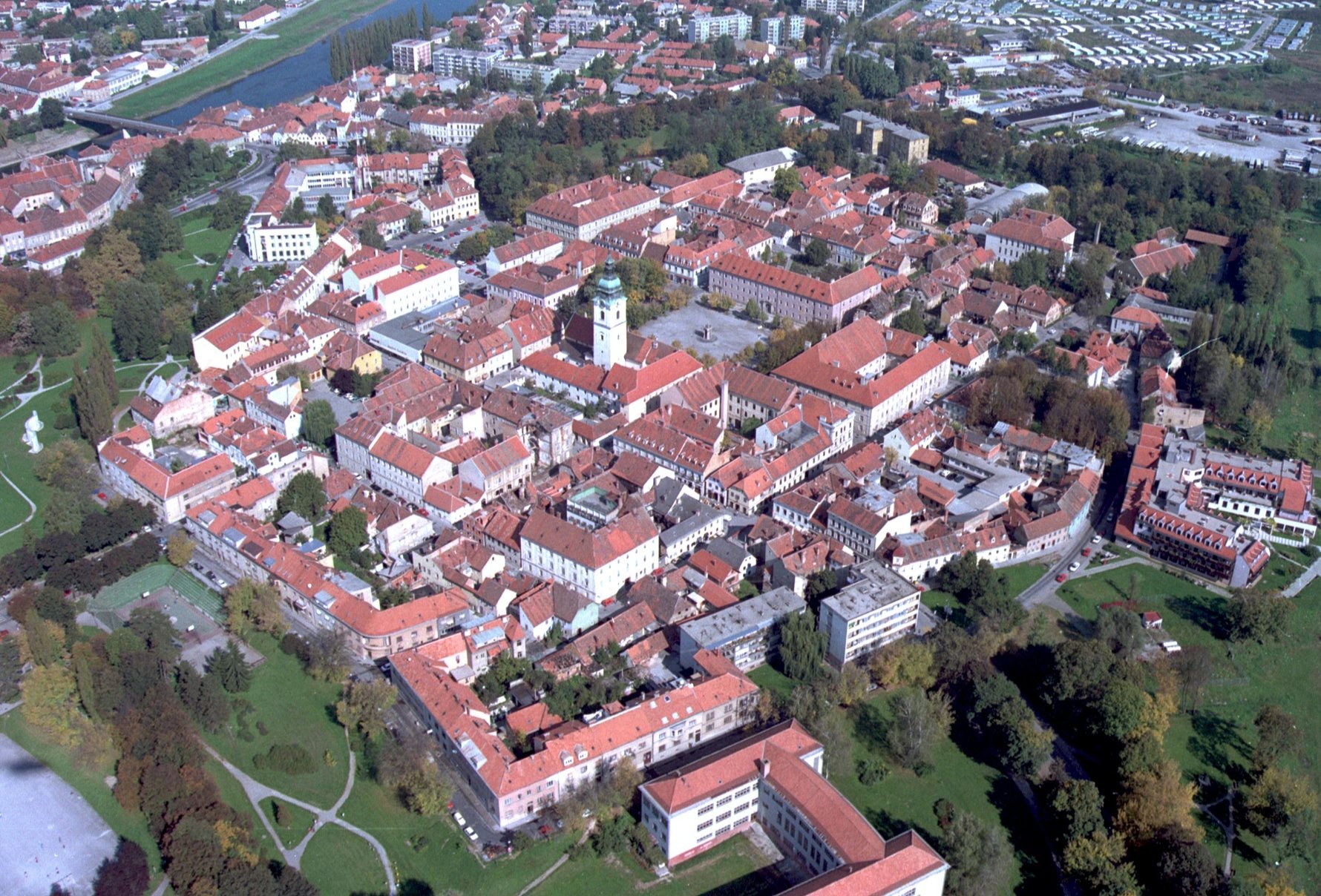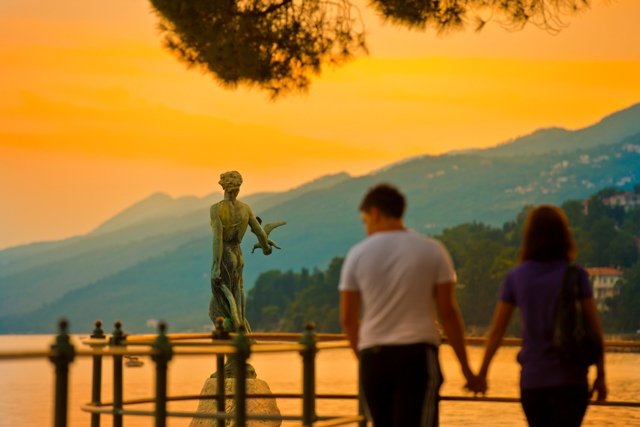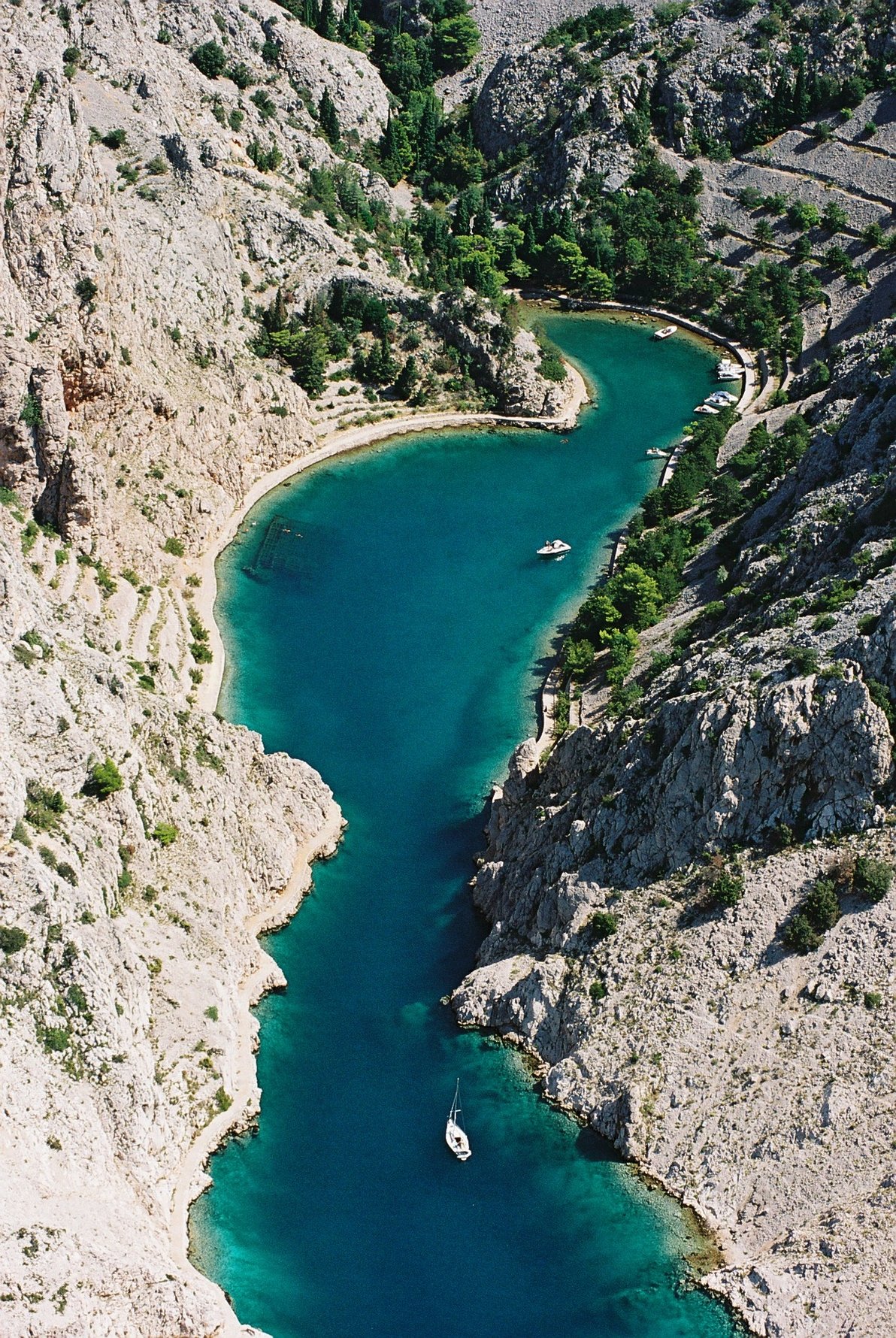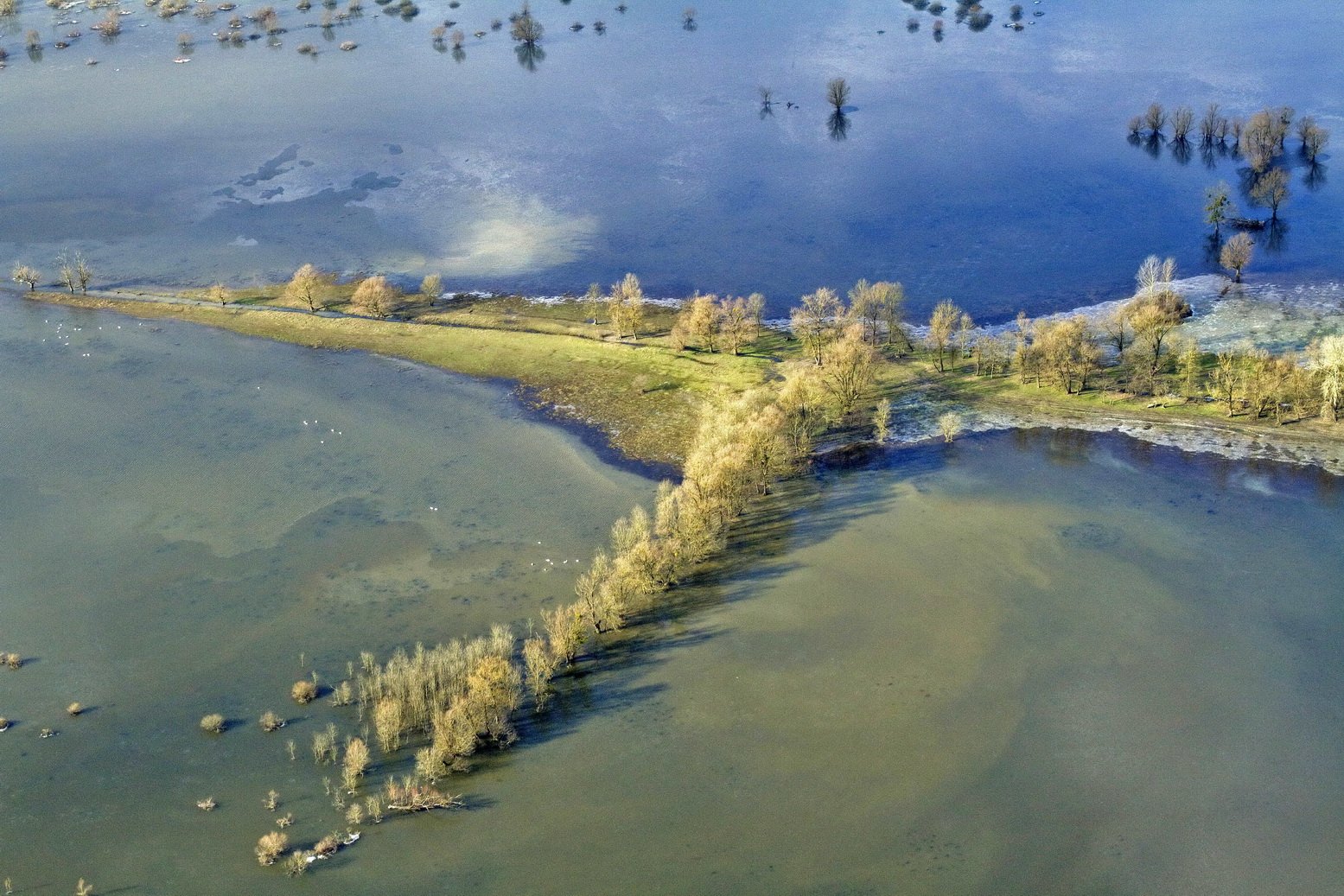Bjelovar
Hapsburg charm and greenery
Bjelovar, founded in the 18th century by decree of Empress Maria Theresa, has been more recently declared the prettiest town in inland Croatia. It basks on the southern slopes of the Bilogora mountains: you can enjoy a bird’s eye view from the hiking lodge at Kamenitovac. Bjelovar’s surroundings offer a peaceful escape, comfort food and great local cheeses. At nearby Daruvarske Toplice you can choose mineral mud baths, massage and medical treatments, while kids will love the Aqua Balissae water park. Wine lovers can explore the wine routes of the Bilogora mountains and the rolling Daruvar countryside. If you happen to be nearby during Christmas or Easter, swing by the Salaj family holdings at Čazma where you’ll see more fairy lights than your eye can behold. Sleepy Bjelovar’s handball club is surprisingly dynamic, winning the title of European champions in 1972.
Karlovac
The bastion of Europe
All roads lead to Karlovac in Croatia, and if you’re on your way to the coast by car, chances are you’ll pass through too. We heartily recommend you stop and explore the city and its surroundings. Karlovac was founded in 1579 as Karlstadt, an important fortress protecting the Austrian Empire against Ottoman attacks. The fortress was built in a defensive star shape and the oldest parts of the city lie within its walls. On the old main square you’ll find the Church of the Holy Trinity, a Franciscan monastery and the town museum. Karlovac lies on four clean rivers, popular for swimming, rafting, canoeing and fishing, and one of Croatia’s best beers, Karlovačko pivo, is brewed here. In Karlovac’s surroundings don’t miss the hilltop castle at Ozalj, and Rastoke, a delightful settlement of watermills built on waterfalls where the River Slunjčica joins the Korana at Slunj.
Karlovac Tourist Board Archives
Koprivnica
The most handsome town square in inland Croatia
To experience the rural and gastronomic delights of the Podravina region, head by car from Ludbreg towards Pitomača, or take the bike route that starts at Legrad. Koprivnica is along your way. Many agree that the town square, flanked by lemon Hapsburg-era buildings, is one of the most impressive in inland Croatia. Here you’ll find the Kraluš pub with hearty local food on the menu. Try prga, cheese made with paprika, or the savoury cakes bregovska pita and zlevanka. Koprivnica’s Podravka factory is the spiritual home of Croatia’s food manufacturing industry, which is why there’s a Museum of Food here. Also visit the village of Hlebine, the heartland of naïve art in Croatia; the Inkeny chateau in Rasinja; the pretty town of Đurđevac with its desert botanical reserve, and Križevci with 8 belltowers forming a cross and the world’s only all-female historic military guard.
Opatija
Period elegance and luxurious spas
With its elegant architecture, manicured parks and promenades, it’s easy to see why Opatija is often called the Croatian Nice. Opatija grew into a favoured resort during the Austro-Hungarian Empire, and this history is evident in the wonderful old hotels and villas that line the shore. The climate here is mild throughout the year, and the coast is framed by a riot of vegetation where forested slopes plunge into the sea. You can visit at any time of the year and take the air on the 12 km coastal path or the hillside trails, then choose between hotel spas or treatments in the Thalassotherapy clinic. In the parks, among the wonderful planting you’ll spot camellias, the symbol of the Opatija Riviera. Look out for the Opatija Camellia cake, the perfect treat for those back home. Be sure to visit Villa Angiolina where you’ll find the Museum of Tourism: Opatija was Croatia’s first tourist resort. You can drink coffee on the terrace of Hotel Kvarner, the oldest hotel, and stroll along the Croatian Street of Fame celebrating the achievements of people who have contributed to Croatia’s standing on the world stage. Opatija has many public sculptures: famous folk in some way connected with the town (novelist Miroslav Krleža, dancer Isadora Duncan, and violinist and composer Jan Kubelik); and local motifs like the Opatija Boatman and the Girl with the Seagull. In the evening, take in a performance at the Summer Festival or drop into one of the dressy nightclubs.
Opatija Tourist Board Archives
Požega
Golden valley, golden wines
Požega lies in a fertile basin in western Slavonia known in Roman times as Vallis Aurea: the Golden Valley. Still today this valley is a source of some of the finest wines in Croatia, including Graševina (Welschriesling) – perhaps the best-known of all the whites wines of Croatia. A tour of the vineyards and tasting rooms around Kutjevo northeast of Požega is the highlight of a trip to this region. In Požega itself, a pretty little town of harmonious baroque buildings, don’t miss the museum where you can learn about the history of the town. Nearby Mount Papuk (953m) and its Nature Park are ideal for hiking, while horse lovers should head for Lipik and the stud farm for Lipizzaner horses (founded in 1843), where you can book a horseback or carriage ride. Afterwards, ease away your aches and pains in the Lipik spa, a complex of fine old buildings in beautiful grounds.
Pula and the Brijuni National Park
From ancient Rome to Hapsburgs to WWII
Pula is synonymous with its jaw-dropping amphitheatre where Roman gladiators once battled, now among the world’s most stunning concert and film venues. In this 3000-year city-museum you’ll also see the triumphal Arch of the Sergii, the Temple of Augustus, Hercules Gate, the Twin Gates, and ancient churches and chapels. Pula has a long naval and military history, and one of its most unusual artefacts is an extensive network of tunnels started during the Austrian period to connect Pula’s fortifications and provide shelter from bombardment. Tunnel no. 12, “Zerostrasse”, was recently opened to the public: its entrance is close to the Twin Gates and its cool chambers are a venue for exhibitions. Just off Pula’s coast, the 14 Brijuni Islands form a national park with an equally fascinating past. The Austrians built a fortress here, and when they abandoned the islands a Viennese business magnate created a fashionable Austro-Hungarian era resort. When Brijuni became part of Yugoslavia, Tito had his summer residence built here, entertaining heads of state and international movie stars. A 1956 meeting at Brijuni gave rise to the Non-Aligned Movement. The respect Tito enjoyed among world leaders is reflected in the Brijuni safari park: a resident elephant was donated by Indira Gandhi in 1974, and other exotic animals are descendants of gifts to Tito from presidents around the world. A unique hybrid, fondly known as the “Brionko”, is a cross between a Somali sheep and a native mouflon.
Senj
Where mountains plunge into the sea
Senj is famed for fearsome pirates and north winds whipping down from the Velebit range. The symbol of Senj is the 16th century Nehaj fortress, part of the Hapsburg defences against the Turks, while historical artefacts testify to a past going back to Roman times. Completely spared from mass development, this part of the coast has dramatic views of highlands and islands, and secluded pebbly coves where the sea is fed by mountain springs. Tourism is on a low-key scale, with foreign visitors mainly coming for camping and adventure sports. You’re in easy reach of mountain peaks and meadows, including the Northern Velebit National Park, the picturesque village of Krasno (a Marian shrine), and the watermills of the Gacka valley. After a hard day’s exploring, watch the lights twinkling all over the Kvarner Bay as you feast on a plate of freshly-caught seafood or local lamb.
Zavratnica bay, Photo by Ante Španić
Senj Tourist Board Archives
Slavonski Brod
Urban elegance and open-air action
Halfway between Zagreb and Belgrade, on the banks of the River Sava and right on the Bosnian border is Slavonski Brod, a pleasing town of low-rise baroque buildings, a major centre of the Slavonian plains. Be sure to visit the impressive Brod Castle, the baroque Franciscan Monastery and the house of Ivana Brlić Mažuranić (1874-1938), a much-loved author of children’s fairy tales. Take a stroll along the Kej, a leafy riverside walkway, and join the locals for a dip in summer. The countryside is flat with undulating hills criss-crossed with bike routes and footpaths. To the east, the Gajna nature reserve is rich in wetland species. The lovingly-restored old village of Stara Kapela is 40 km away, offering food, accommodation and a host of activities. At Vrpolje, birthplace of the great sculptor Ivan Meštrović, the memorial gallery contains a fine selection of his work.
Sisak
Historical treasure on three rivers
Sisak is best known in Croatia for the industries that grew up here, but the old town centre, looped by three rivers, makes a relaxing place to while away the time. Apart from a leafy riverbank promenade you’ll find the Sisak Ring of buildings documenting the town’s 1000-year history. The Mala Kaptol is one of the oldest, while the Veliki Kaptol is the site where the first play in the Croatian language was performed. The triangular 16th century fortress two kilometres from the town centre was the epicentre of the Battle of Sisak in 1593, earning Sisak a place in the history books as a significant bastion against the Ottoman Empire. Not far away is the Lonjsko Polje Nature Park where you’ll find picturesque villages of wooden cottages. The village of Čigoč is famous as the nesting place of some 200 storks each year, and you can see exhibitions of traditional crafts here.
Lonjsko polje Archives





Comments